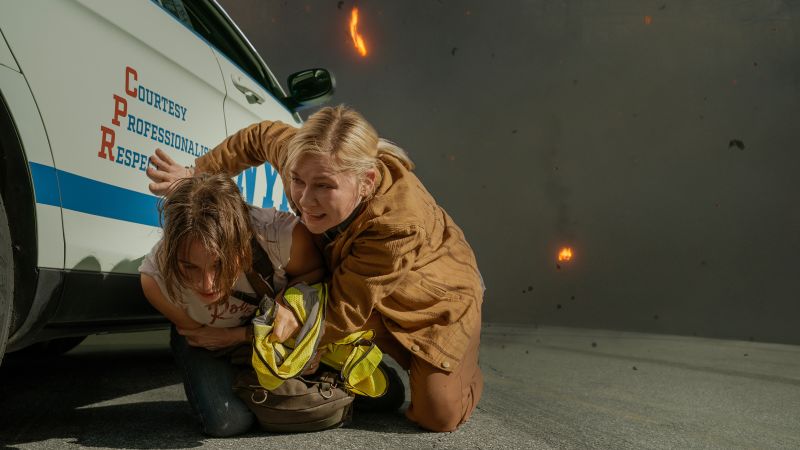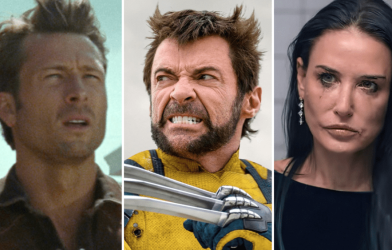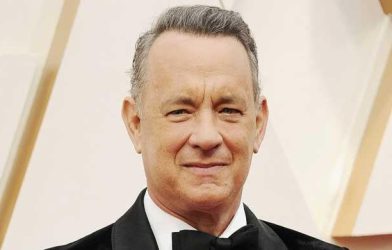Editor’s Note: Noah Berlatsky is a freelance writer in Chicago. The views expressed here are solely the author’s. View more opinion articles on CNN.
CNN
—
“Much of the American artistic and cultural work about the Vietnam War, even as it engages in anti-American criticism, places Americans firmly and crudely at the story’s center,” Viet Thanh Nguyen writes in his 2016 study, “Nothing Ever Dies: Vietnam and the Memory of War.” You could expand this dictum to most Hollywood war movies; however they feel about war, their main goal is often to imagine, and experience, war as a uniquely American trauma.
Noah Berlatsky
Noah Berlatsky
Alex Garland’s “Civil War” has mostly been discussed as a reflection of, and a warning about, America’s current partisan divisions. That’s understandable, especially given Garland’s framing in interviews, where he’s called the current left-right split in the country “incredibly dangerous.”
But whatever Garland says, “Civil War” cannot be understood simply as a comment on current US politics. It is also part of this tradition of Americanizing US experiences of wars overseas. The movie transposes the experiences of foreign war correspondents, and foreign war atrocities, to the US itself.
Garland’s clever, ambiguous narrative deftly obscures and reimagines the war movie tradition, even as he participates in it. He does this in part by focusing specifically on journalists, who are observers of war in ways which sometimes parallel, and sometimes contrast with, the way in which movie viewers are observers.
The film is set in a near future in which the US has split into several warring factions. Union forces loyal to the president (Nick Offerman) are losing ground. Photojournalist Lee (Kirsten Dunst) and journalist Joel (Wagner Moura) decide to travel to Washington, DC, for a final interview (despite the fact that the president is reputed to shoot journalists on sight). The two veteran reporters are joined by young would-be photographer Jessie (Cailee Spaeny) and Sammy (Stephen McKinley Henderson), an older war correspondent who is Lee and Joel’s mentor.
Courtesy of A24
Kirsten Dunst is Lee Wagner, a military journalist, in “Civil War.”
The political context of “Civil War” is deliberately ambiguous. The president is a journalist-hating authoritarian, implicitly evoking Trump, and explicitly compared in the film to dictators like Libya’s Muammar Gaddafi. The secessionist states, though, include deep-blue California and red Texas, so they don’t break down along current political lines.
Unlike the actual US Civil War, this one doesn’t seem to have any particular racial or racist connotations. A nameless, terrifying mass murdering war criminal, played by Jesse Plemons, does seem to have it in for people born outside the US. But as far as we know, that’s just his own nativism; there isn’t broader evidence of ethnic cleansing or racial genocide.
The film’s refusal to be specific could be seen as a cop out. But it’s the same kind of cop out that powers most of Hollywood’s most iconic Vietnam war movies. Francis Ford Coppola’s “Apocalypse Now” (1979) and Stanley Kubrick’s “Full Metal Jacket” (1987), for example, don’t spend much time in parsing, or thinking about, the political context of the war. Instead, both focus on the terrifying, devastating experience of combat and on the nightmarish dislocations of being embedded in violence. They center personal trauma and psychological harm in a way that makes politics and morality largely irrelevant.
View this interactive content on CNN.com
Hollywood Vietnam war movies generally aren’t about whether America did the right thing, nor are they about how America’s choices affected people in Vietnam. Instead, these movies are about how the war affects the conflicted souls of the American protagonists — generally soldiers, but also sometimes politicians and people on the home front. That’s why so many American Vietnam movies take place on US soil.
In “First Blood” (1982), an American veteran wages war on a rural US community, metaphorically bringing the war home. In “Red Dawn” (1984), Cuban and Central American troops invade the US. Americans in Hollywood movies are generally viewed as the true, and indeed, only, victims of American foreign policy. In that context it makes sense to make movies in which fighting takes place here rather than there, and in which Americans are envisioned as colonized people, rather than as colonizers.
Warner Bros/Kobal/Shutterstock
Stanley Kubrick’s “Full Metal Jacket” (1987), starring Matthew Modine as Joker, is based on the events of the Vietnam war.
“Civil War” both reproduces this dynamic and, to some degree, questions it. Lee, Jessie and the other journalists risk their lives as they follow soldiers into combat, looking for the perfect, devastating image of spectacular violence. During her first venture into war journalism, Jessie says that she has never felt so scared, and also never felt so alive.
War as a coming of age story, or as a test of courage and genius, is common in war films — Joker (Matthew Modine) in “Full Metal Jacket” experiences a baptism by fire that is analogous to Jessie’s in some ways. “Civil War,” though, is arguably more self-reflective. Jessie is fascinated not just with violence, but with the image of violence which she can record on her camera. That fascination puts her in the position of the movie viewer, who is — like her — transfixed and perhaps transported by Garland’s tour de force of simulated atrocities, from stark mass graves to ear-blasting fire fights.
It’s notable too that Jessie’s first, significant picture is a photograph of Lee photographing dead bodies. The appeal of war photography for Jessie is not just seeing the worst. It’s seeing herself seeing the worst. The power of the war film is that it puts you, watching, in the place of those suffering. Like Jessie, you experience yourself as a target of violence, which is both horrifying and exhilarating.
Get Our Free Weekly Newsletter
Garland’s film may seem less like a trenchant critique of our current crisis, and more like a solipsistic indulgence. “Civil War” doesn’t mention nuclear weapons; it doesn’t mention American foreign policy. It imagines that a US controlled by an authoritarian president would turn its violence inward, and only inward. But both our history and US military engagement around the world today testifies to how unrealistic that is.
Traditionally, film fantasies of American suffering are the flip side of worse suffering for the people the US has targeted. Jessie is transfixed, thrilled and terrified by the nightmare images she sees through her lens. But as long as Hollywood war movies like “Civil War” are focused so intensely and singularly on the experiences of Americans, they will have trouble capturing the real dangers of American violence, no matter how awful the images they show, or how loud the bombs.









